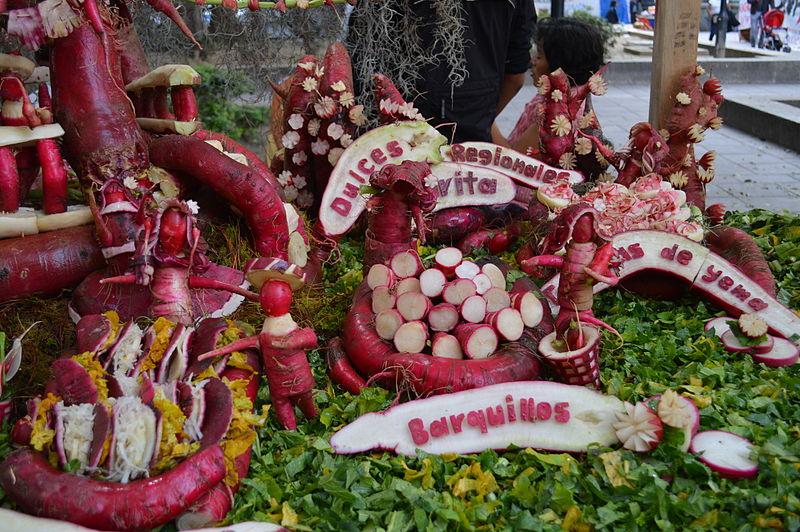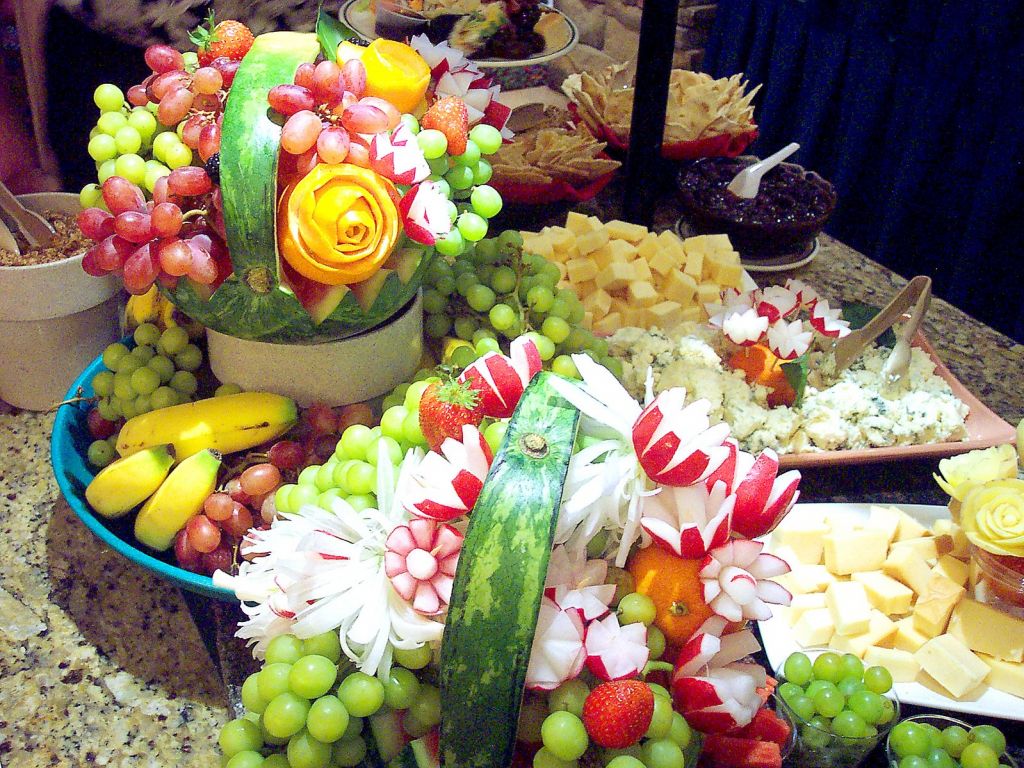The Night of the Radishes or as known by locals as Noche de Los Rabanos in Spanish is an annual event. It is a day dedicated to the carving of oversized radishes or Raphanus sativus to create scenes that compete for prizes in various categories.
The Night of the Radishes is a radish-carving contest that is held every year. Participants compete to carve radishes into figures showing the birth of Jesus Christ or scenes that elaborate historical scenes. It is celebrated annually on the 23rd of December in the city of Oaxaca, Mexico.
According to the legend, the Night of the Radishes began in the mid-18th century. The time when the radish crop was so abundant that a section lay unharvested for months. Two friars pulled up some of the forgotten radishes in December. They were amused with the sizes and shapes that they have decided to bring them to the Christmas market held on December 23. The misshapen vegetables attracted attention and they soon began carving to give them a wider variety of shapes and figures. The legend is actually close to the real origin.
It actually originated in the colonial period when radishes were introduced by the Spanish. Radishes are native to China and were introduced to Mexico by the Spanish friars. It became a side dish, a snack or a design that is carved into decorations for special dishes.
Oaxaca city has a long wood carving tradition and farmers began carving radishes out of their ware to make it more eye-catching as a way to attract the attention of the customers. The radishes began to be carved with religious themes in relation to the annual Christmas Vigil market during the colonial period. It was held in the city of Oaxaca on December 23 with the encouragement of priests which is held in the main square.
The city created it as a formal competition in 1897. Francisco Vasconcelos is the city mayor of Oaxaca, Mexico in that year. He decided to create a formal radish carving competition which has been held each year.
The city has had to dedicate land especially to the growing of the radishes used for the event. They used the land to supervise the growth of the radishes and the distribution to competitors as the city has grown. The event attracts over 100 contestants and thousands of visitors making it very popular.
Since the radishes can easily be wilt after carving, it can only be displayed for a couple of hours which led to creating long lines for people who wish to see the works. The event displays and held competitions for works made with corn husks and dried flowers which are created with the same themes as those with radishes.
The carvings were a marketing gimmick by the farmers using it to attract the attention of shoppers in the city plaza market. This marketing ploy has evolved into a festival over the years where it is now celebrated every year with a cash prize to the best carver. People start buying the radishes not only to eat but to create centerpieces for Christmas dinners.
Various types of radishes have been used both in Oaxacan cuisine and for carving through the years. A completely large white type of radish called criollo was used much earlier as it did not rot easily and it adopts more capricious forms. Unfortunately, criollo has been disappeared but an image of them can be seen called as “Las tentaciones de San Antonio” is a work by Diego Rivera.
The special day might sound funny for some, but it is a celebration that has a rich history behind it. The Night of the Radishes also teaches us not to put food to waste and use it for something useful as how the friars did with the unharvested radishes that they brought to the Christmas Vigil market.



